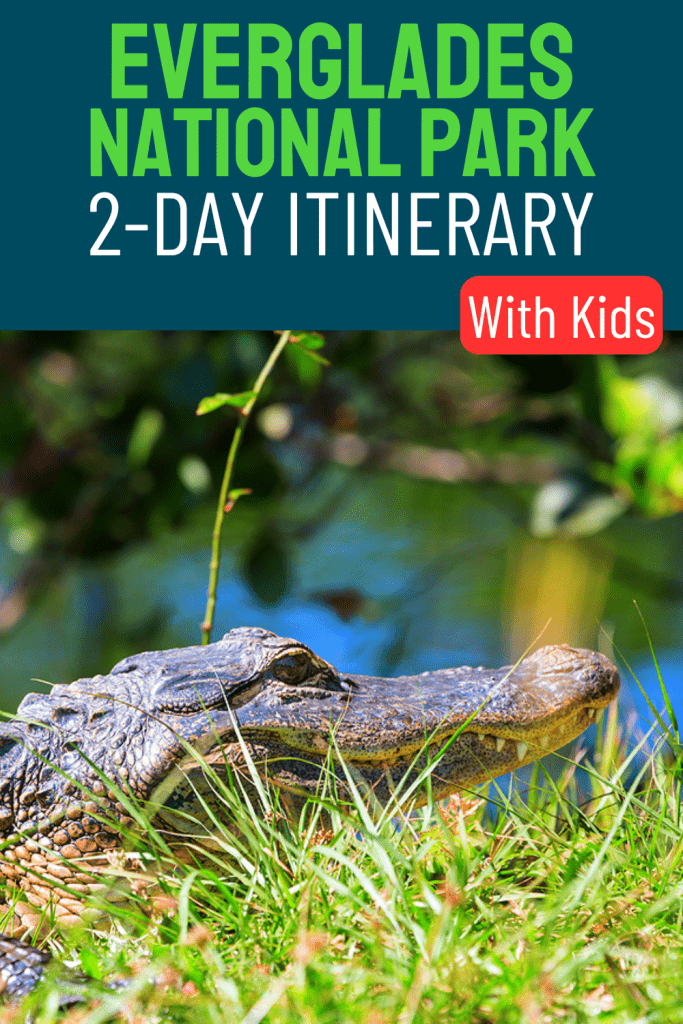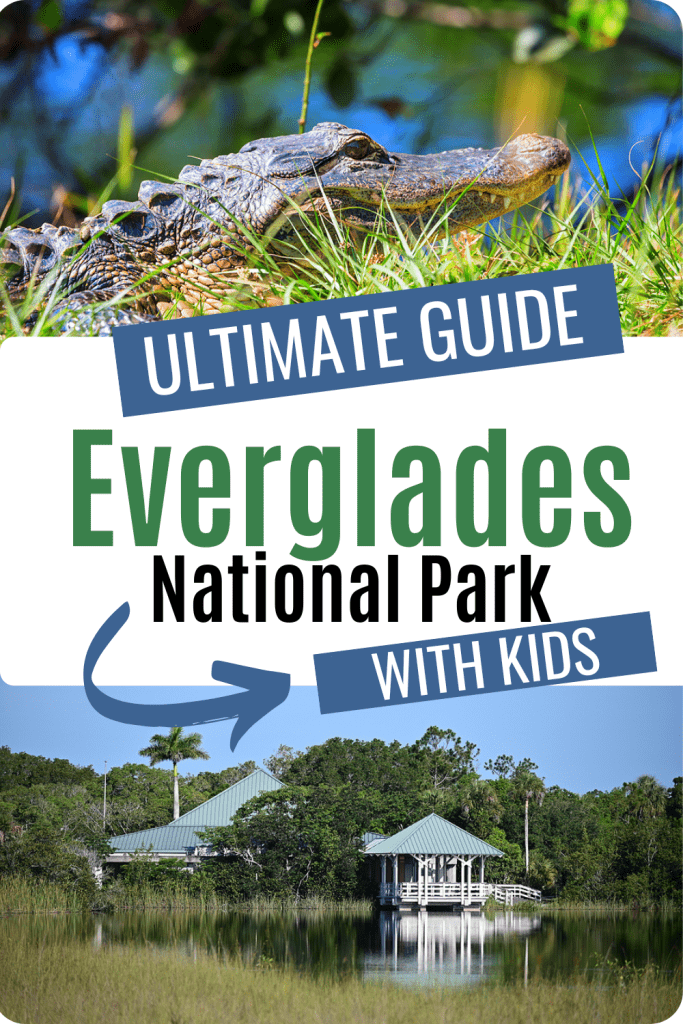Located in southern Florida, Everglades National Park spans over 1.5 million acres, making it the largest subtropical wilderness in the United States. The park is home to different ecosystems, including sawgrass marshes, mangrove forests, and pine rocklands, which provide a habitat for many animals, such as alligators, crocodiles, manatees, and numerous bird species.
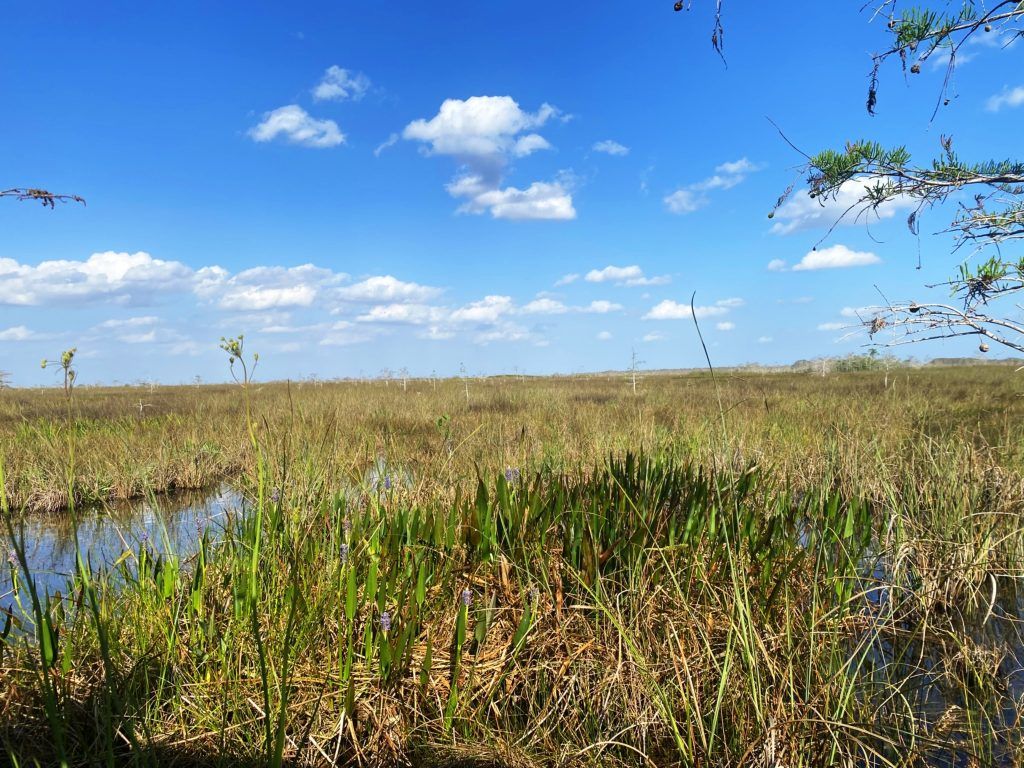
The Everglades is different from other national parks because of its flat, wet landscape. The park’s water flows gently from Lake Okeechobee to the Gulf. This unique landscape makes the Everglades an interesting place to explore, with its winding waterways, mangrove tunnels, and sawgrass prairies.
With six distinct habitats to discover—from mangroves to freshwater marshes—Everglades National Park makes a great educational trip for kids. Whether your family decides hike, bike, kayak, or take a boat tour to experience the Everglades, it’s a trip you won’t forget.
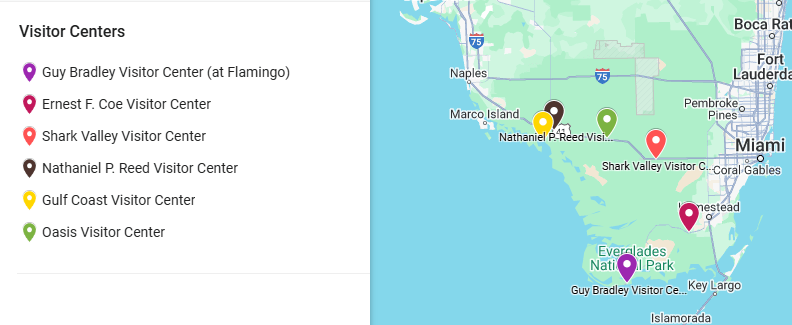
Park Entrances and Visitor Centers
Everglades National Park has multiple entrances, each providing access to unique areas of the park. The park’s entrances are scattered across its vast territory, allowing visitors to explore different ecosystems and attractions. Here’s an overview of the park’s main entrances:
- Homestead Entrance: Located near the city of Homestead, this entrance is a popular starting point for visitors. It provides access to Ernest F. Coe Visitor Center, which offers information on park activities, trails, and wildlife viewing opportunities.
- Shark Valley Entrance: Situated in the northern part of the park, this entrance is known for its Shark Valley Visitor Center and the Shark Valley Tram Tour, which takes visitors on a guided tour of the park’s sawgrass marshes and wildlife. Located on US 41, about 30 miles west of the turnpike exit for SW 8th Street, the center is open daily and offers convenient amenities like restrooms, informational exhibits, and a small gift shop.
- Gulf Coast Entrance: Located in the southwestern part of the park, this entrance provides access to the Gulf Coast Visitor Center and the Ten Thousand Islands area, which is famous for its mangrove forests and marine wildlife.
- Flamingo Region: Situated in the southern part of the park, this entrance is a great area for exploring the park’s coastal areas, including the Guy Bradley Visitor Center and the Flamingo Campground.
- Big Cypress Visitor Centers: Located within the Big Cypress National Preserve and along your drive between Gulf Coast Visitor Center and Shark Valley, these visitor centers educational information on the unique mix of wetlands, cypress domes, and wildlife of the preserve.
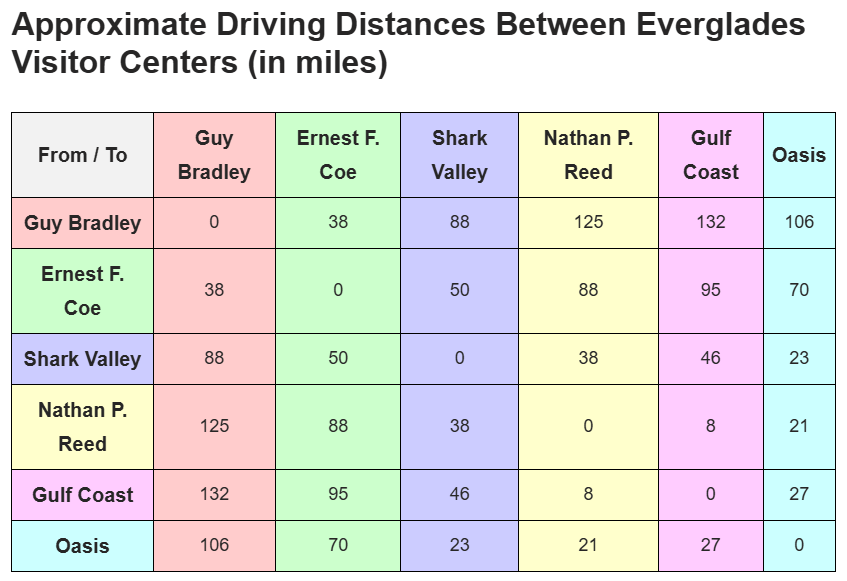
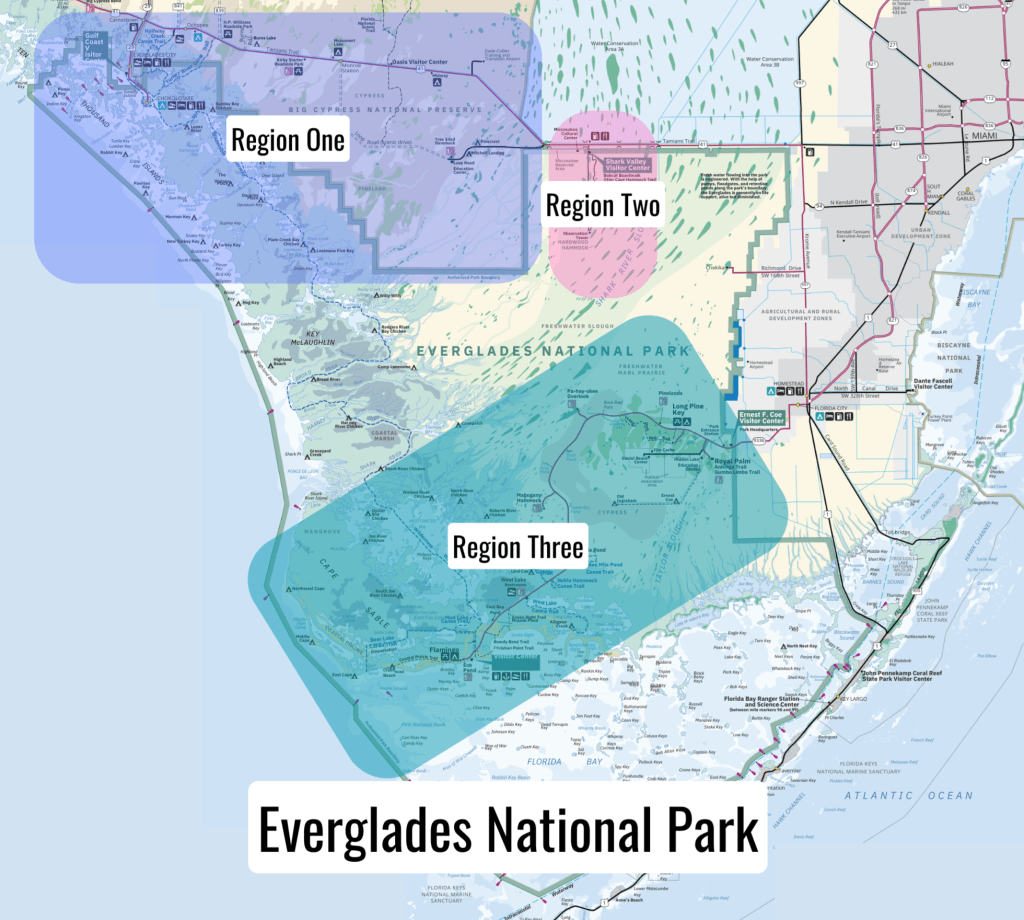
Exploring the Park’s Regions
To help you plan your visit, we’ve divided the park into three main regions, each with its unique characteristics and attractions. From the mangrove forests and marine wildlife of the Ten Thousand Islands to the sawgrass marshes and alligators of Shark Valley, and the coastal areas and wildlife viewing opportunities of the Flamingo corridor, each region offers a different experience for visitors.
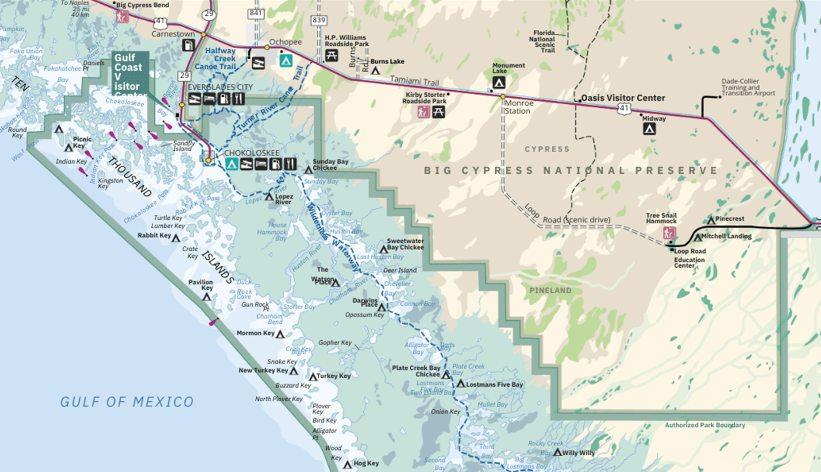
Region One: Ten Thousand Islands and Gulf Coast Visitor Center Plus Big Cypress National Preserve
Ten Thousand Islands and Gulf Coast Visitor Center
The Ten Thousand Islands region of Everglades National Park is where marine and estuarine waters stretch from the Ten Thousand Islands to Florida Bay. Beneath the water, seagrass beds provide crucial food and shelter for marine creatures, offering a unique chance for families to glimpse dolphins, manatees, and even sea turtles on a boat or canoe tour. This habitat also plays a key role in maintaining healthy fish populations and sustaining the surrounding ecosystems, making it a fascinating introduction to the watery world of the Everglades.
Located near the town of Everglades City, this region is accessible by car or boat and offers airboat, boat, and kayaking options to explore the area. If you’re looking for a unique and exciting way to explore the Ten Thousand Islands, consider taking a guided boat tour. These tours offer a chance to see the region’s incredible wildlife, including dolphins, manatees, and sea turtles, and to learn about the region’s fascinating history and ecology.
During our visit we greatly enjoyed our Ten Thousand Islands Boat Tour. Starting on the Barron River, our guide gave us background information about historic buildings in Everglades City. During the tour, the guide also pointed out various bird species and shared fascinating details about stone crab fishing, highlighting the region as the stone crab claw capital, and educating us on how crabs regenerate their claws within 1 to 1.5 years,
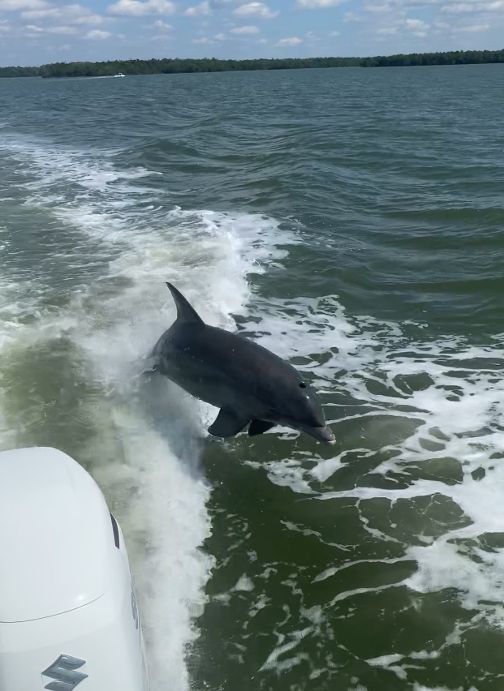
We then traveled into Chokoloskee Bay and the Ten Thousands Islands within the Everglades National Park. Our guide was informative and told us about the birds, the ecosystem, and helped us see dolphins. On our way back, three dolphins started playing in our wake, putting on the quite the show as they swam close to the back of our boat. Note that you’ll need a National Park pass or pay an entry fee in addition to your boat tour fees.
The Gulf Coast Visitor Center, located 4.75 miles south of US 41 on FL 29 in Everglades City, is the perfect starting point for families exploring the Ten Thousand Islands. Open daily, it offers restrooms, picnic areas, exhibits, and information on park activities. During the winter, visitors can take advantage of ranger-led programs, which are both educational and fun for kids.

For families looking to get active, the visitor center provides wilderness permits, rentals for canoes and kayaks, and access to marinas and boat launch facilities.
Enjoy time on a kayaks or canoes, paddling through the calm waters of the Ten Thousand Islands, getting up close and personal with the region’s incredible mangrove tunnels and shallow waters. These mangrove trees form a natural barrier against storm winds and surges, protect and stabilize the coastline, and provide nesting spaces for wading birds.
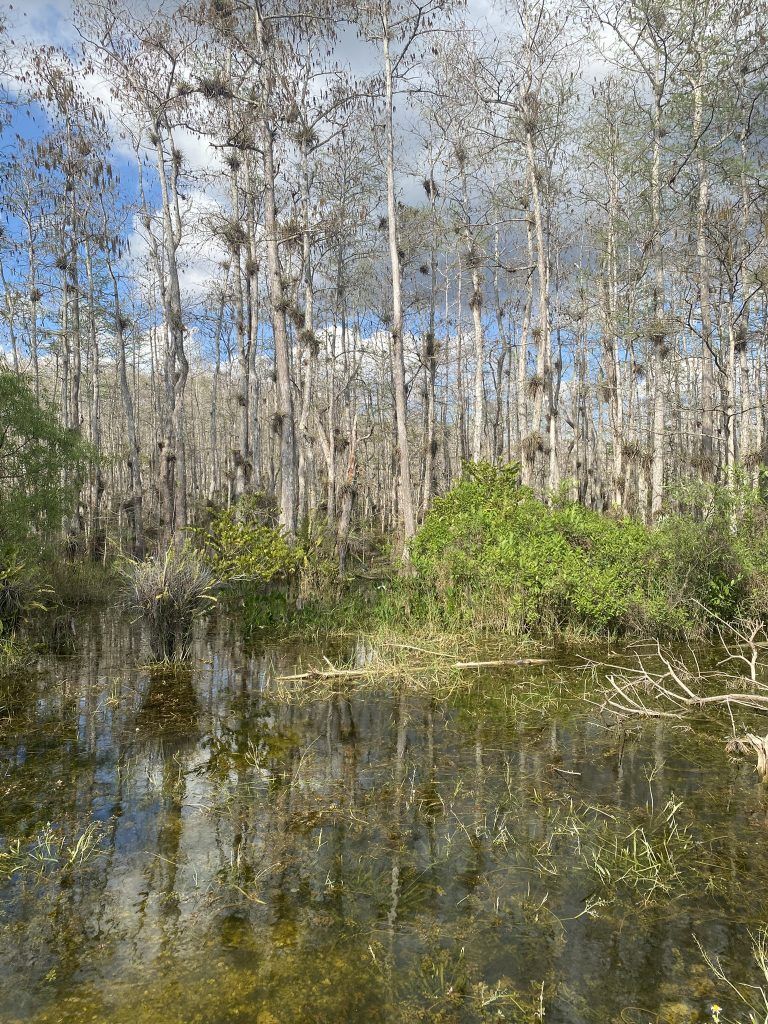
Nathan P. Reed Visitor Center and Big Cypress National Preserve
Exploring the Big Cypress region allows you to see towering cypress trees up close. These wetland giants thrive in flooded conditions and often grow in fascinating patterns, forming domes with the tallest trees in the center or linear strands that follow the flow of water. Some cypress trees in the park are hundreds of years old, creating a living legacy that connects kids to nature’s timeline—a unique experience they’re sure to remember
The Nathan P. Reed Visitor Center, located within Big Cypress National Preserve, serves as an excellent starting point for exploring. Behind the visitor center, visitors can enjoy a boardwalk that offers an opportunity to observe the surrounding wetlands and spot wildlife. During our visit, we were lucky enough to see a manatee in the water.
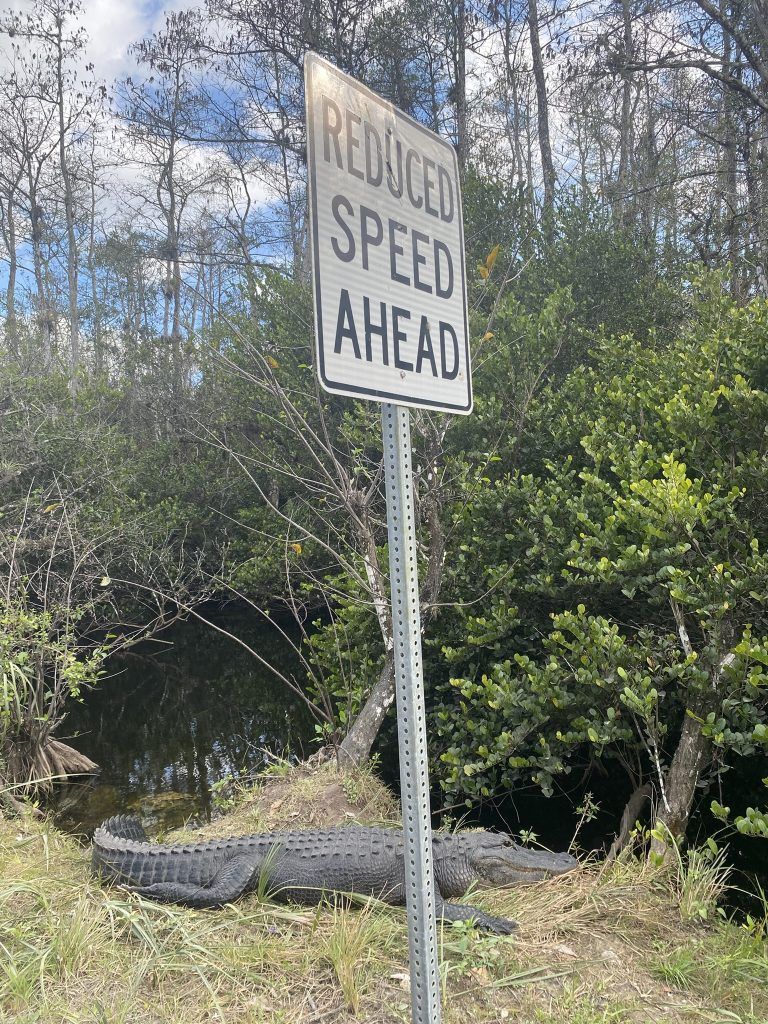
After exploring the visitor center, we drove the scenic drive through Big Cypress National Preserve. The Loop Road Scenic Drive is a two-way 24-mile road that starts at Monroe Station on the western end and connects to Forty Mile Bend on the eastern end, both of which are located along Tamiami Trail (US 41).
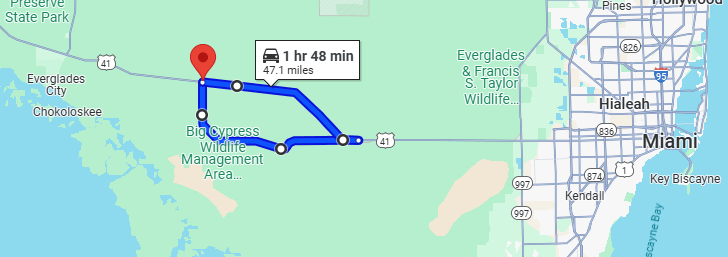
The drive leads through landscape of cypress domes, sawgrass marshes, and prairies. We greatly enjoyed the journey, appreciating the beauty of the preserve while spotting wildlife along the way—including wading birds and many alligators. The mix of paved and unpaved paths gives a sense of adventure while remaining accessible to most vehicles, 4WD is not necessary.
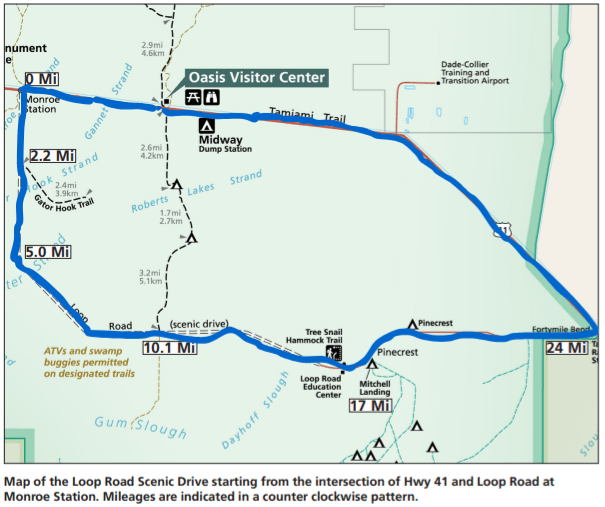
This scenic drive is truly a must for anyone visiting Big Cypress, I recommend printing the loop drive guide to narrate during your visit.
If you have more time, explore the area further by driving the Turner River Loop. This 17-mile route, built alongside canals filled with water, are open and sunny, making wildlife viewing more accessible compared to shaded areas.
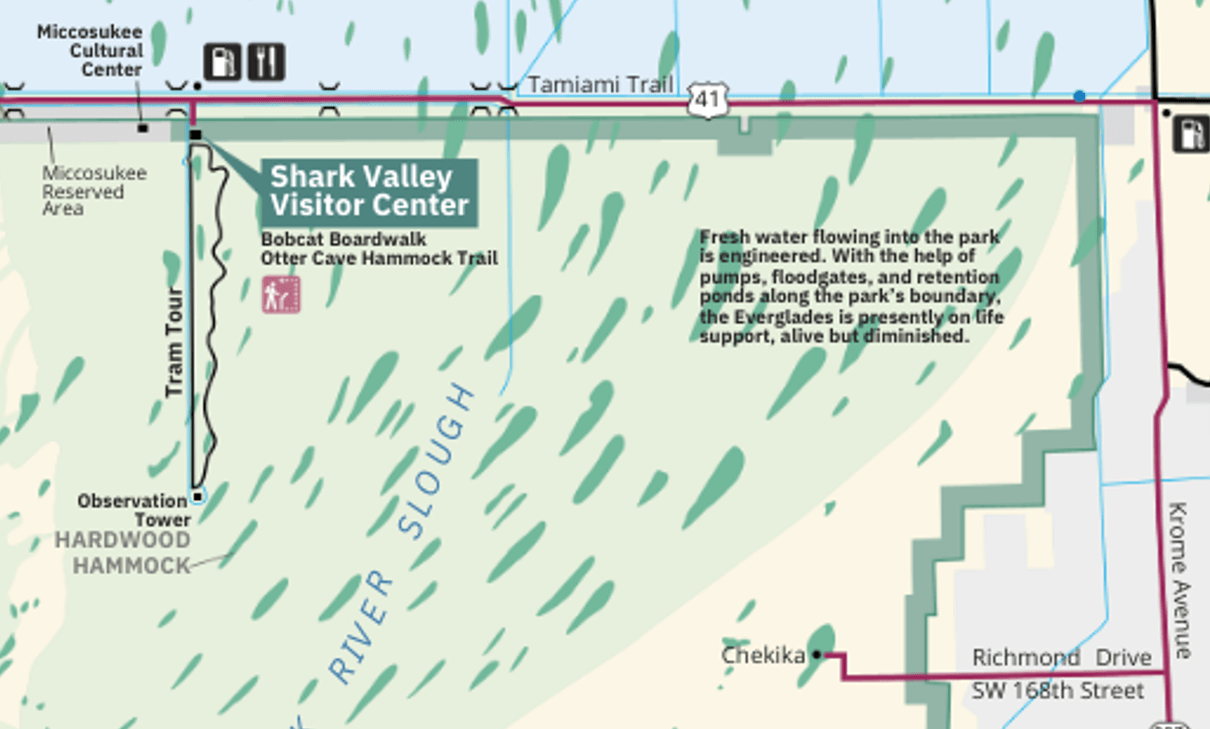
Region Two: Shark Valley Area
Located in the northern part of Everglades National Park, the Shark Valley Area showcases the park’s sawgrass marsh ecosystem. This area is 35 miles west Miami or about 4 miles east from the above Big Cypress Loop exit at 40 Mile Bend, making it a popular destination for day trips and excursions. Here you’ll find the freshwater marsh—a wide, shallow, slow-moving ‘river of grass’ that many recognize as the park’s iconic landscape.
As you take a tram ride or bike along Shark Valley’s 15-mile loop, you’ll be traveling through two major marsh drainages, Shark River Slough and Taylor Slough.
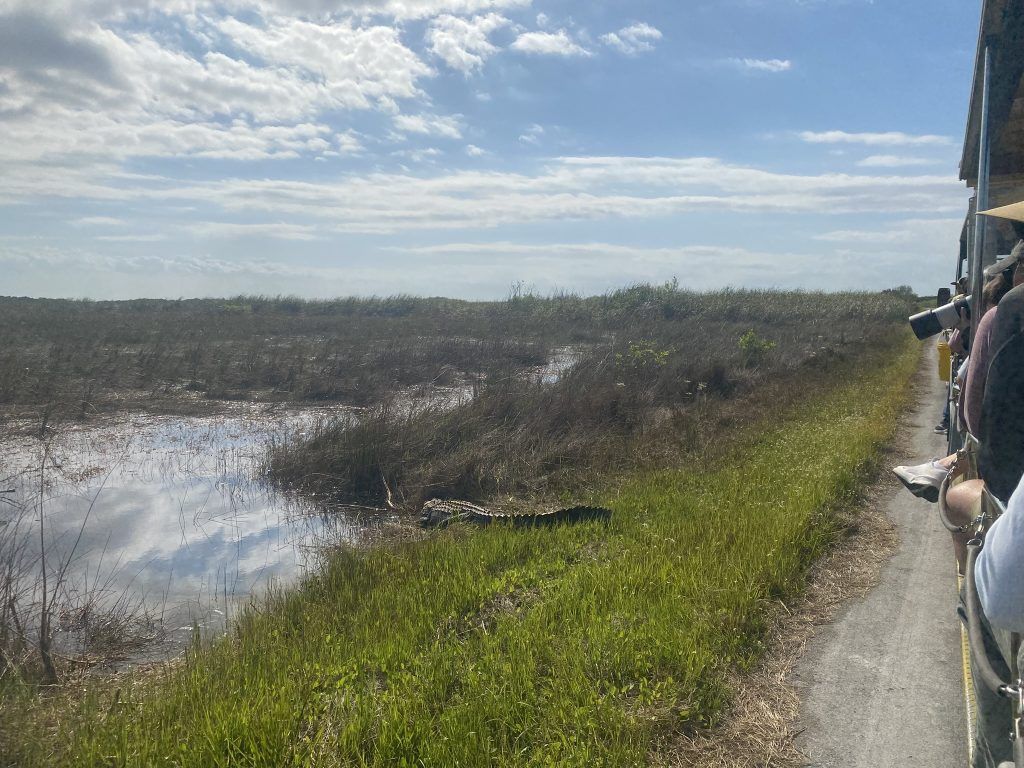
Shark Valley Tram Tour
One of the highlights of the Shark Valley Area is the Shark Valley Tram Tour, a 2-hour guided tour that takes visitors through the sawgrass marshes and offers stunning views of the surrounding wildlife. The tram tour is a great way to spot alligators, as they often sunbathe on the banks of the waterways in the morning. To maximize your chances of spotting these incredible creatures, be sure to sit on the left side of the tram. Due to the popularity of the tram tour, it’s highly recommended to book your tickets well in advance, especially during peak season.
The tour follows a paved road that winds its way through the sawgrass marshes, offering stunning views of the surrounding landscape.
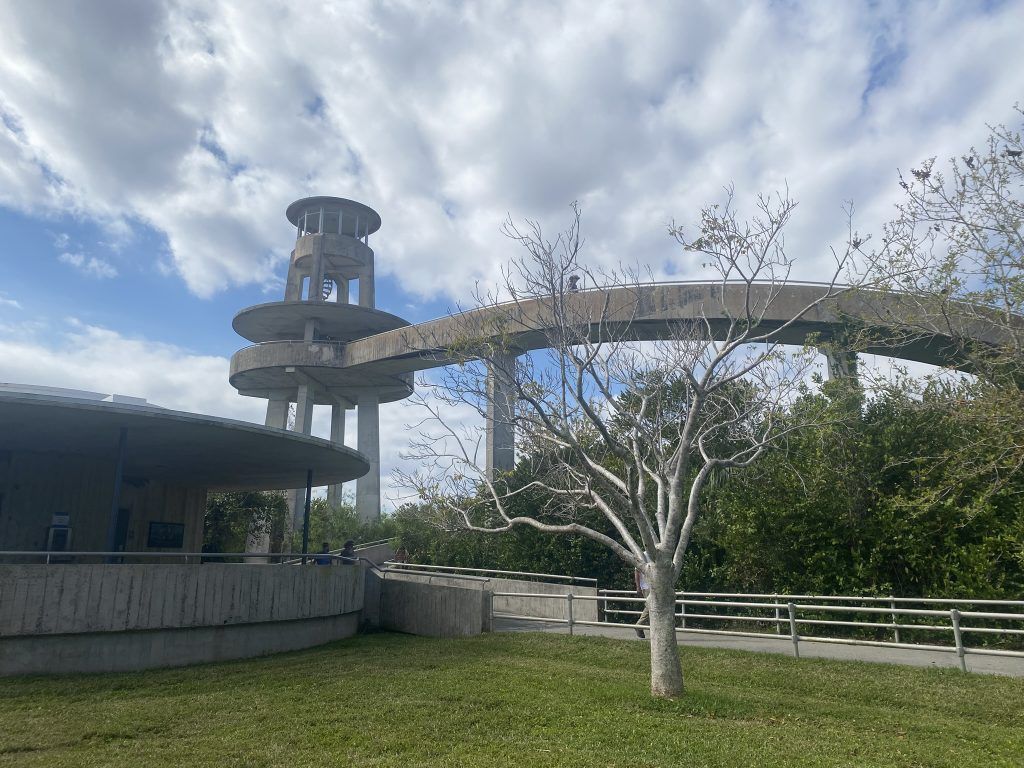
One of the highlights of the tour is the Observation Tower, a 65-foot-tall structure that provides panoramic views of the Everglades. You’ll have the chance to disembark from the tram and climb to the top of the tower, where you can take in the breathtaking views and spot wildlife from a unique perspective.
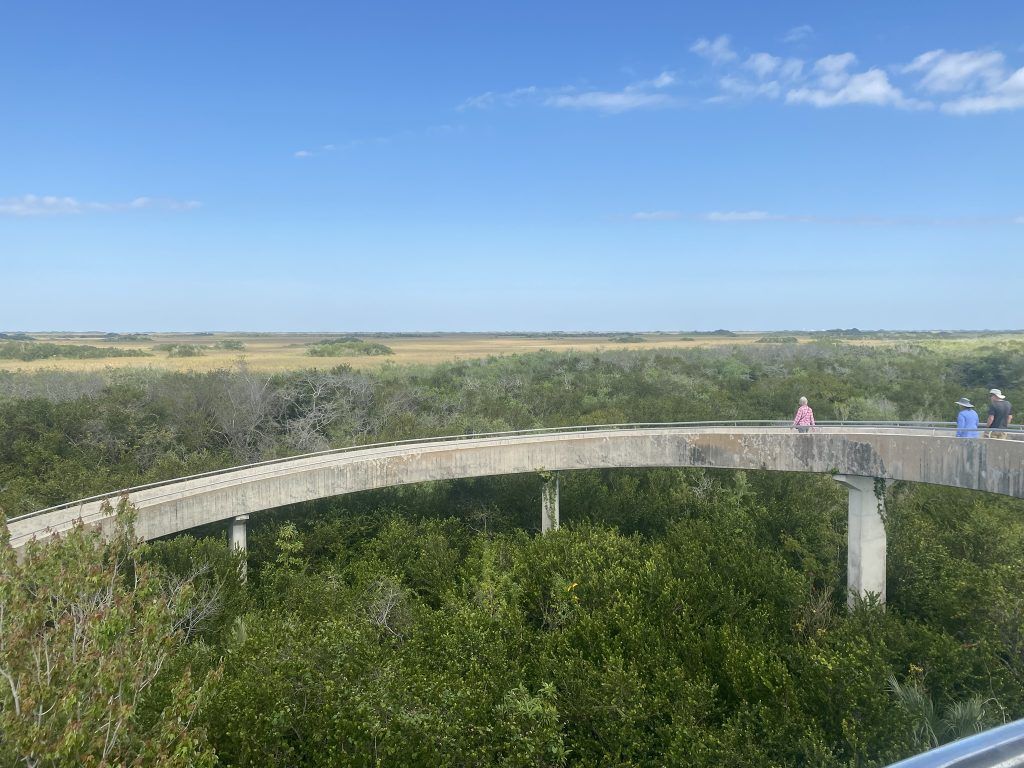
Throughout the tour, a knowledgeable park ranger will provide narration, sharing insights into the history, geology, and wildlife of the Everglades. The ranger will point out interesting sights and answer questions, helping you to gain a deeper understanding of this unique ecosystem.
For those who prefer to explore the area on their own, bike rentals are available at the Shark Valley Visitor Center. The 15-mile loop road that runs through the Shark Valley Area is a great way to experience the park’s natural beauty at your own pace. Keep in mind that the road is shared with the tram tour, so be sure to follow all safety guidelines and regulations.
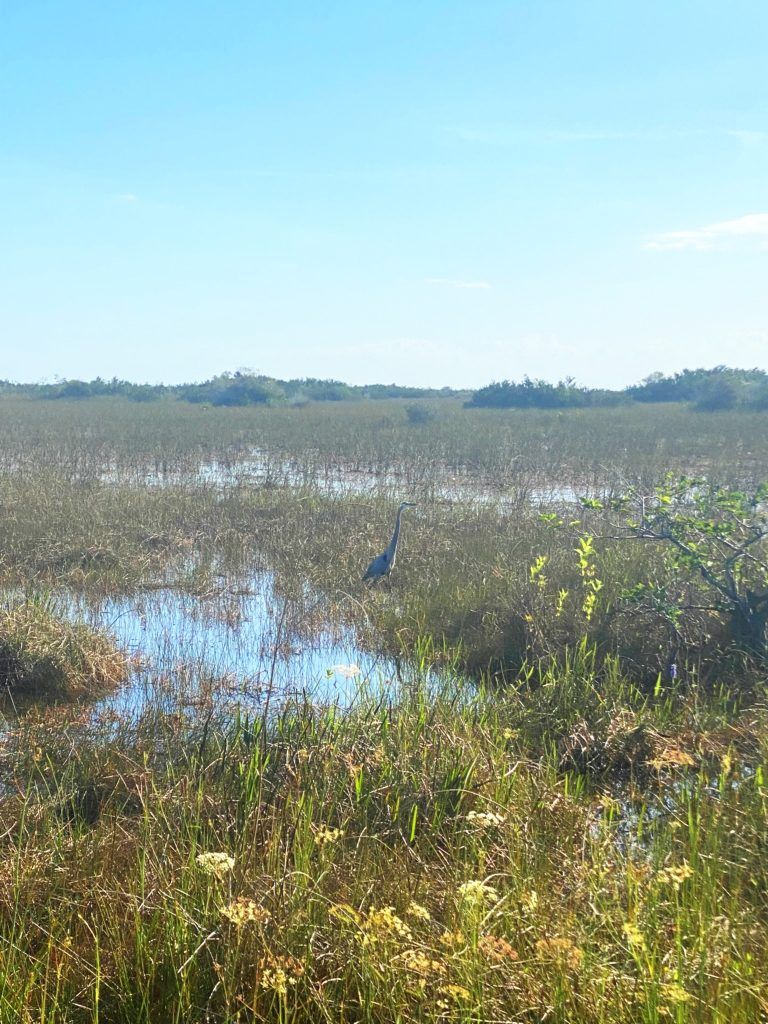
Tips for Your Shark Valley Tram Ride
Before planning your visit to the Shark Valley Area, please note that the gates open at 8:30 am, and it’s not uncommon for a line to form that can stretch all the way out to the highway. Additionally, the parking lot can fill up quickly, and in extreme cases, overflow parking can extend out to the highway. Park staff are aware of the parking issues and have implemented measures to minimize the impact on visitors.
If you miss your scheduled tram tour due to traffic or parking delays, don’t worry! The staff will allow stand-by visitors to fill your spot, and they will work with you to book a new tour time. This flexibility ensures that everyone has a chance to experience the Shark Valley Tram Tour, even if unexpected delays occur. Be sure to plan ahead, arrive early, and be patient, as the staff will do their best to accommodate all visitors.
After arriving at the Shark Valley Visitor Center and parking, be sure to check in for your tram ride at the designated check-in area. Upon checking in, you will receive a red ticket, which you will need to give to the tour operator before boarding the tram. This ticket confirms your reservation and ensures that you have a spot on the tour.
Kid-Friendly Trails Near Shark Valley Visitor Center
- Bobcat Boardwalk (0.5 miles): This short, accessible trail winds through the sawgrass marsh, offering kids an up-close look at the Everglades’ iconic “river of grass.” It’s an easy walk perfect for younger children and a great spot to spot birds and other wildlife.
- Otter Cave Hammock Trail (0.3 miles): This short trail takes families into a tropical hardwood hammock and dense vegetation. Do note that this trail is closed during the summer and fall, so it’s best visited in winter and spring.
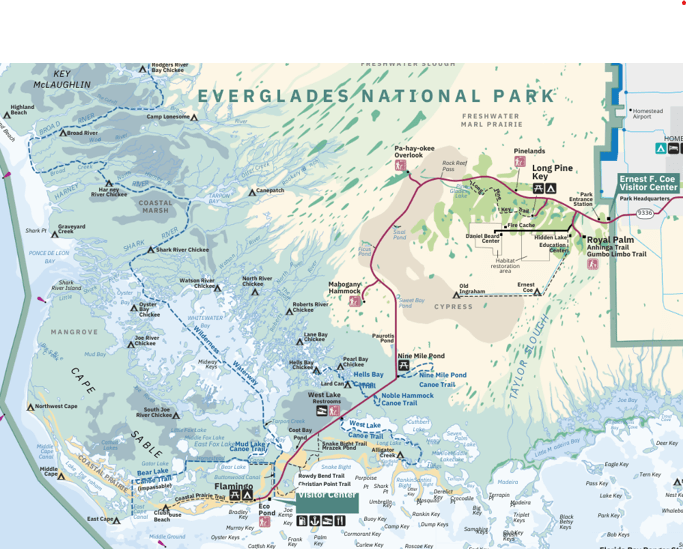
Region Three: Ernest F. Coe Visitor Center to Guy Bradley Visitor Center (Flamingo)
The Flamingo Area is located in the southern part of Everglades National Park, and is accessible from the Ernest F. Coe Visitor Center, which is situated near the city of Homestead. From the visitor center, the drive to Flamingo is approximately 38 miles, and it takes around 1-1.5 hours, depending on traffic and without stopping.
As you drive from the visitor center to Flamingo, you’ll have the opportunity to stop at multiple points of interest, including hiking trails, wildlife viewing areas, and scenic overlooks. Be sure to take your time and enjoy the views, as this corridor offers some of the most stunning scenery in the park.

Turn-offs from the Corridor: What to See and Do
- Ernest F. Coe Visitor Center: Located near Homestead, the visitor center features informative exhibits, a nature-oriented bookstore, and an educational film showcasing the park’s unique ecosystems. It’s also the starting point for exploring highlights like the Anhinga Trail and the scenic Flamingo Corridor.
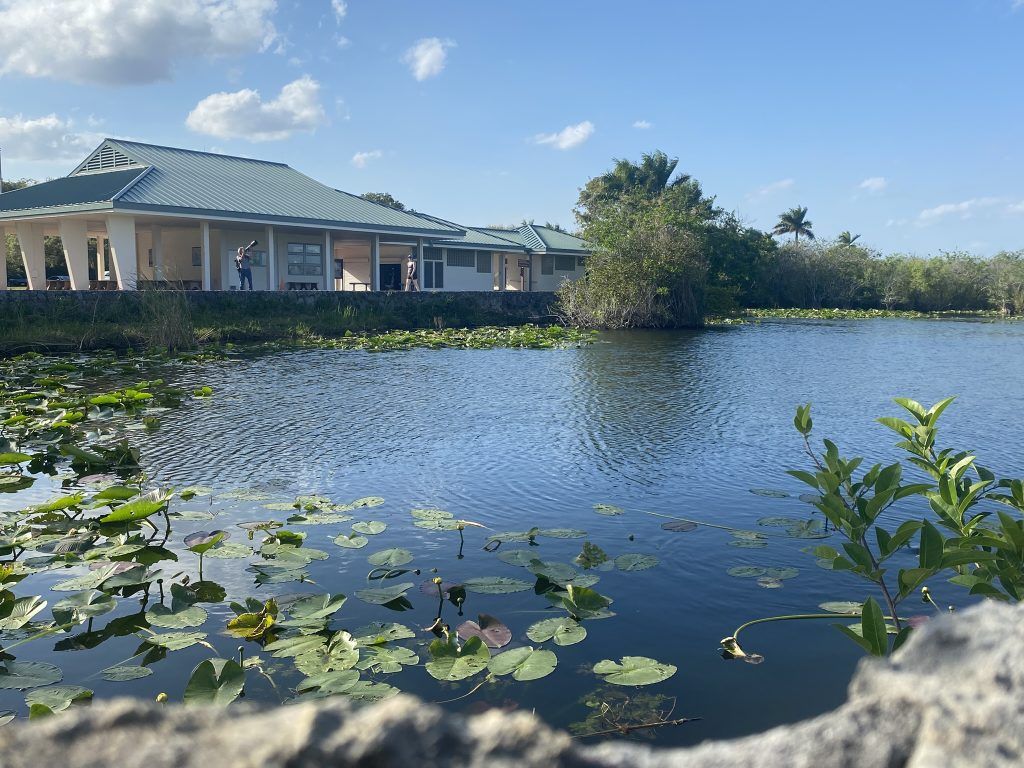
- Royal Palm Visitor Center (4 miles from Ernest F. Coe Visitor Center): The Royal Palm Visitor Center is a must-stop for anyone visiting Everglades National Park. This center offers a wealth of information on the park’s ecosystems and wildlife, with exhibits that explore the unique characteristics of the Everglades. Be sure to watch the educational documentary video, “Everglades: A Unique and Fragile Ecosystem,” which provides an in-depth look at the park’s natural and cultural history.
- Take a short hike on the Anhinga Trail (0.8 miles, round-trip), which winds through a sawgrass marsh and offers stunning views of the surrounding area. Keep an eye out for alligators, birds, and other wildlife, including the anhinga, also known as the snake bird.
- The Gumbo Limbo Trail (1.5 miles, round-trip) takes you through a hardwood hammock and offers scenic views of the surrounding area. These hammocks are home to an amazing diversity of trees, like tropical mahogany, gumbo-limbo, and mastic, along with fascinating species of ferns and air plants. Natural water moats around the hammocks protect the areas from fire, creating a safe haven for both plant and animal life.
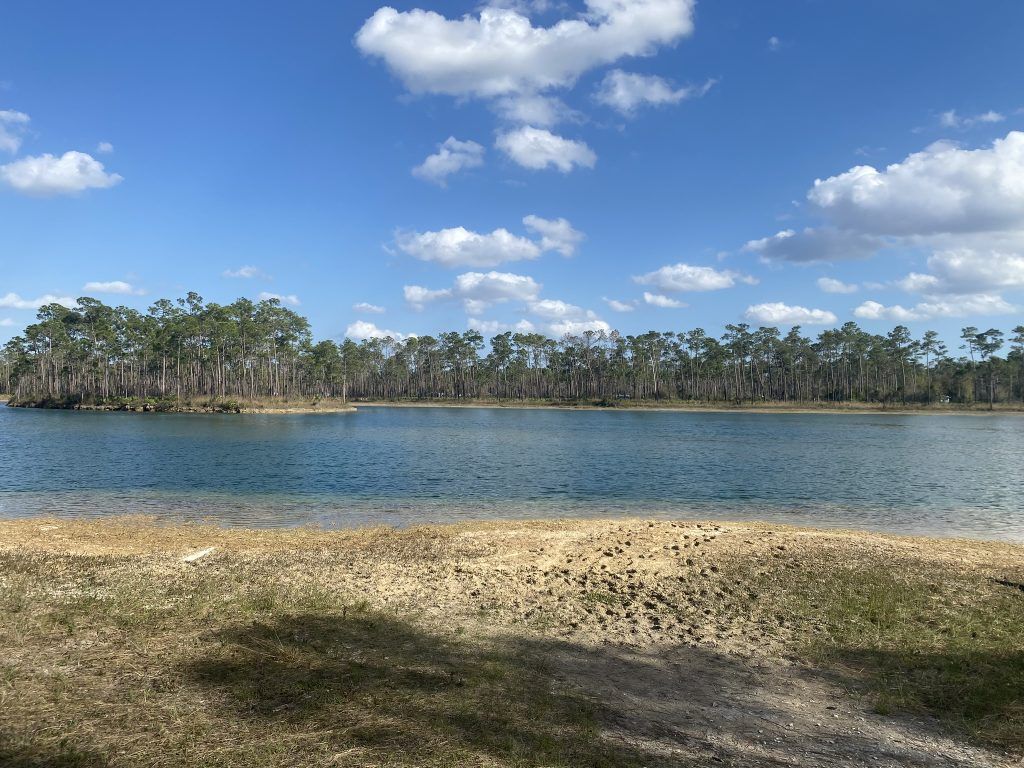
- Long Pine Key Campground (7 miles from Ernest F. Coe Visitor Center): The Long Pine Key Campground is a great place to spend the night if you want to explore the park’s western areas. This campground offers 108 campsites and is located in a scenic area surrounded by pine rocklands. Take a short hike on the Long Pine Key Trail (7.5 miles, round-trip), which winds through a pine rockland and offers stunning views of the surrounding area. Keep an eye out for wildlife, including alligators, birds, and small mammals. The campground also offers picnic areas with tables and grills, making it a great place to stop for lunch or dinner. With its scenic trails, opportunities for wildlife viewing, and comfortable campsites, the Long Pine Key Campground is a great place to experience the natural beauty of the Everglades.
- Pinelands Trail: Take a short hike through a pine rockland ecosystem and enjoy stunning views of the surrounding landscape. Along slightly higher ground, you’ll encounter the Everglades’ rarest habitat: the pine rockland. This forest area features slash pines, saw palmetto, and an incredible variety of more than 200 tropical plant species. Pine rocklands are not just diverse but also one of the most endangered habitats in the world
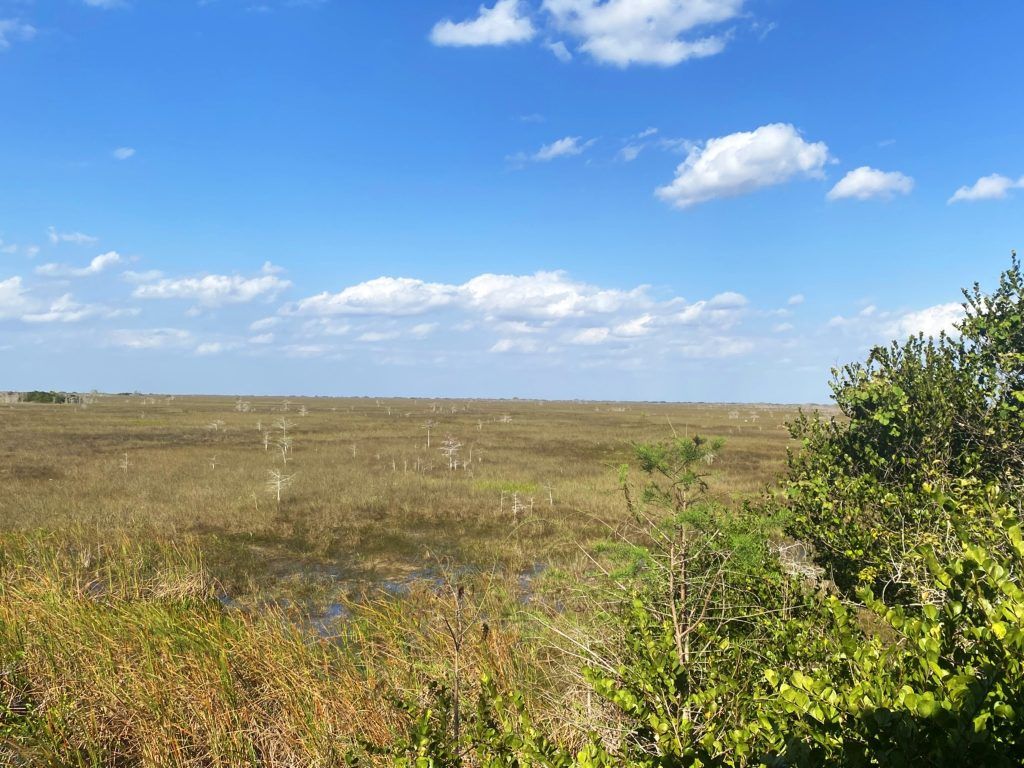
- Pa-hay-okee Overlook (12 miles from Ernest F. Coe Visitor Center): The Pa-hay-okee Overlook is a scenic stop that offers stunning views of the Everglades. This overlook is located on a raised platform that provides a panoramic view of the surrounding area. Take a short walk on the Pa-hay-okee Trail (0.2 miles, round-trip), which winds through a sawgrass marsh and offers scenic views of the surrounding area. Keep an eye out for wildlife, including alligators, birds, and small mammals. The Pa-hay-okee Overlook is also a great place to stop for a picnic lunch, with tables and grills available. With its stunning views and opportunities for wildlife viewing, the Pa-hay-okee Overlook is a must-stop for anyone visiting the Everglades.
- Sial Pond: This turn-off takes you to a small pond that’s home to a variety of wildlife, including alligators and birds.
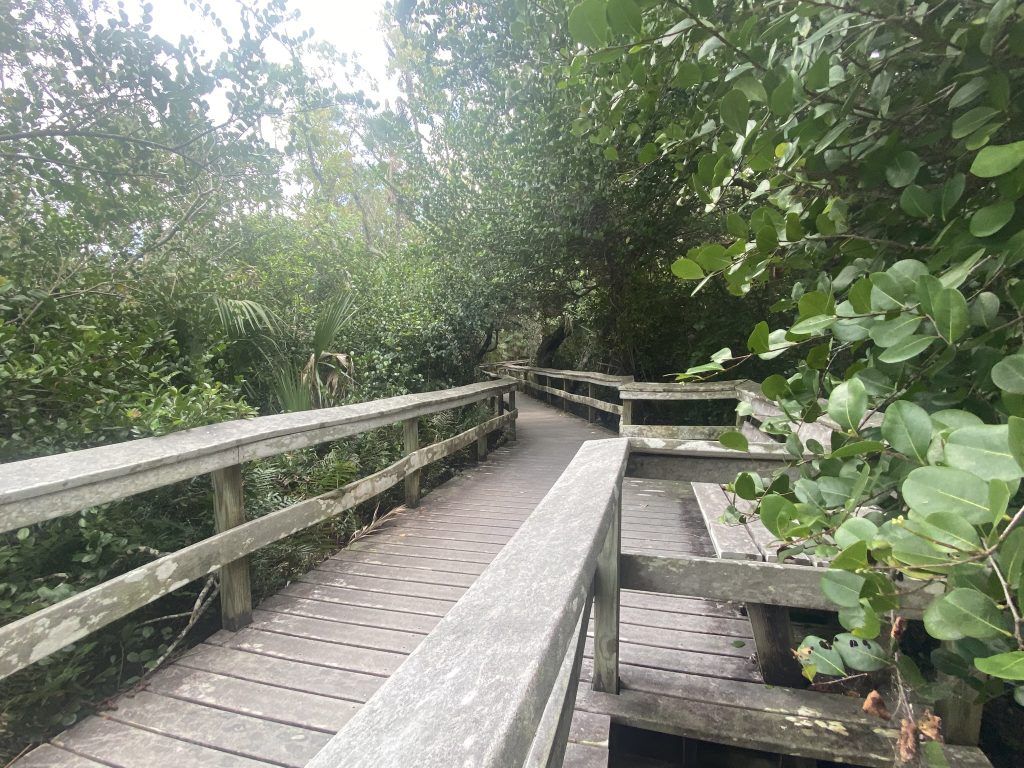
- Mahogany Hammock (17 miles from Ernest F. Coe Visitor Center): The Mahogany Hammock is a unique stop that offers a glimpse into the park’s tropical hardwood forests. Take a short hike on the Mahogany Hammock Trail (0.5 miles, round-trip), which winds through a hardwood hammock and offers scenic views of the surrounding area. Keep an eye out for wildlife, including birds, butterflies, and small mammals. The Mahogany Hammock is also home to a variety of plant species, including the majestic mahogany tree.
- Paurotis Pond: This turn-off takes you to a small pond that is a nesting site for incredible birds like anhinga, wood storks, great egrets, white ibis, and roseate spoonbills.
- Nine Mile Pond Canoe Trail: Take a canoe trip through the Everglades’ sawgrass marshes and enjoy stunning views of the surrounding landscape.
- Noble Hammock Canoe Trail: This turn-off takes you to a scenic canoe trail that winds through a mangrove forest.
- West Lake Boardwalk: A short 0.4-mile boardwalk is one of the best places to see a mangrove forest up close. What makes this stop special is that the mangroves here are adapted to grow in saltwater, with their roots dramatically arching into the water.
- Snake Bight Hiking Trail: This turn-off takes you to a scenic hiking trail that winds through a mangrove forest.
- Coot Bay Pond: Take a short hike to a small pond that’s home to a variety of wildlife, including alligators and birds.
- Rowdy Bend Hiking Trail: This turn-off takes you to a scenic hiking trail that winds through a mangrove forest.
- Christian Point Hiking Trail: Take a short hike through a mangrove forest and enjoy stunning views of the surrounding waters.
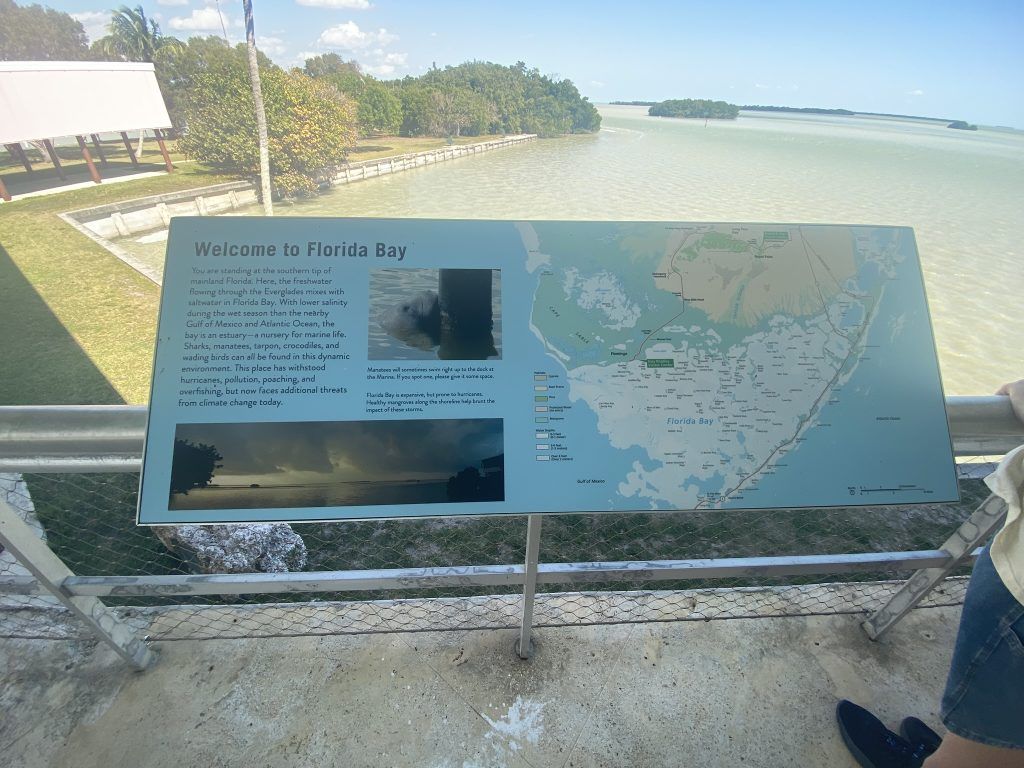
- Guy Bradley Visitor Center at Flamingo: The final stop is at Guy Bradley Visitor Center, a great place to learn about the Everglades’ unique ecosystems and wildlife. Take a short hike on the Flamingo West Lake Trail or explore the Flamingo area, which offers stunning views of the surrounding waters.
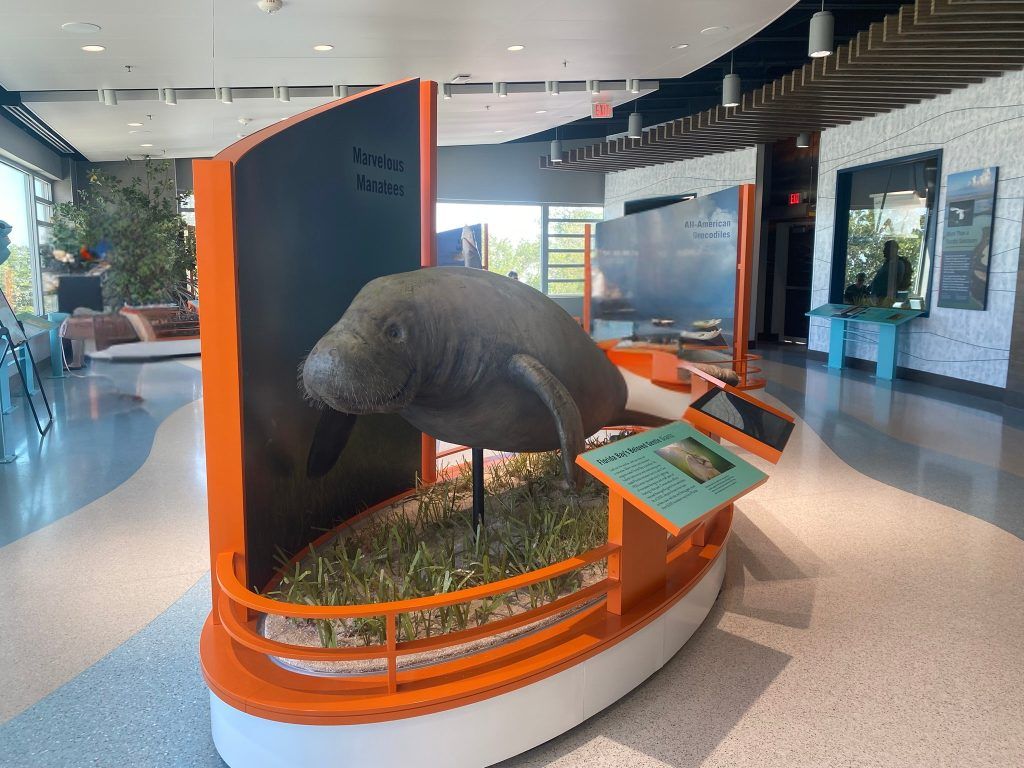
2 and 3-Day Everglades National Park Itinerary with Kids
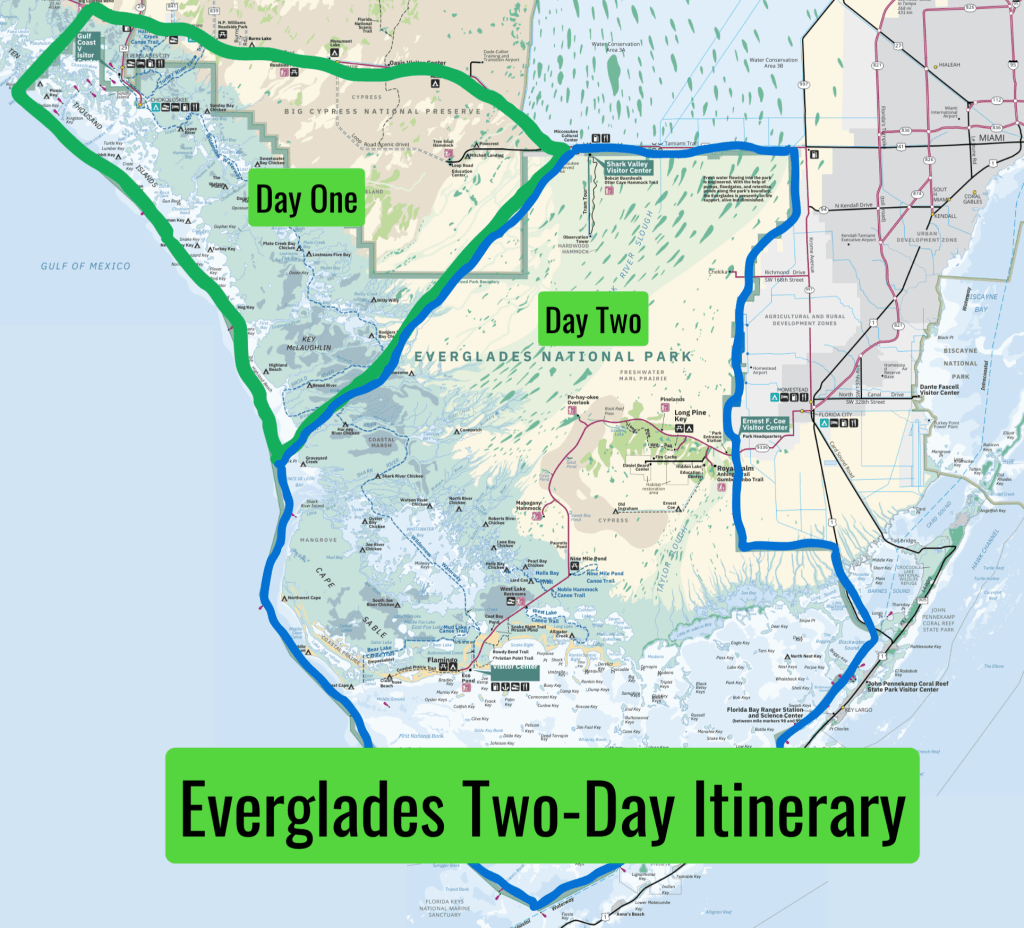
Here’s a family-friendly itinerary to help you explore Everglades National Park and Big Cypress National Preserve over the course of two or three days. This itinerary is designed to highlight the park’s diverse ecosystems, scenic drives, and unique opportunities for spotting wildlife.
Day One: Ten Thousand Islands and Big Cypress National Preserve
Start your Everglades adventure by diving into the beauty of the Ten Thousand Islands, a breathtaking region filled with mangrove forests and abundant marine wildlife. Begin your day at the Gulf Coast Visitor Center in Everglades City, where you can learn about the region’s unique ecosystem while planning your morning activities. Book a guided boat tour to explore the maze of mangroves and waterways that make this area so special. As you glide across the water, watch for dolphins, manatees, and the multiple bird species that call this region home. The tour provides not only stunning views but also valuable insights into the area’s ecology, history, and fascinating local culture, such as the stone crab fishing industry.
After your boat ride, enjoy a delicious seafood lunch at one of Everglades City’s local restaurants or pack a picnic to savor in a nearby shaded area. In the afternoon, head over to the Nathan P. Reed Visitor Center in Big Cypress National Preserve. Beyond the visitor center lies a peaceful boardwalk trail, perfect for spotting wetland wildlife such as alligators and wading birds. Following this, embark on the Loop Road Scenic Drive or the Turner River Loop. Keep your eyes peeled for wildlife along the way, as this is one of the best areas to see alligators and a variety of bird species. Wrap up your day with a scenic drive to Homestead, where you’ll settle in for the night and prepare for the next day.
Day Two: Shark Valley and Ernest F. Coe to Flamingo Corridor
Dedicate your second day to the heart of Everglades National Park, exploring iconic freshwater sloughs and the long scenic ride down the Flamingo Corridor. Day two begins with an early morning visit to the Shark Valley area, situated in the northern part of Everglades National Park. Arrive early to secure parking and take the iconic Shark Valley Tram Tour, a two-hour guided excursion through the park’s vast sawgrass marshes. This tour not only provides incredible opportunities to spot sunbathing alligators and wading birds but also offers panoramic views from the 65-foot Observation Tower. The ranger-led narration enriches your experience by shedding light on the Everglades’ history and ecology. Not interested in a tour? Consider renting bikes at the visitor center and cycling the 15-mile loop road to explore Shark Valley independently.
After wrapping up your Shark Valley visit, drive south to the Ernest F. Coe Visitor Center, the starting point for exploring the Flamingo Corridor. This scenic 38-mile stretch of road winds through diverse ecosystems and offers numerous opportunities for short hikes and wildlife spotting. Make stops at key highlights, such as the Royal Palm Visitor Center to walk the famous Anhinga Trail, where alligators and birds are frequently spotted. Pause at the Pa-hay-okee Overlook for sweeping views of the lush landscape and venture onto the Mahogany Hammock Trail to admire dense tropical hardwood forests featuring the massive mahogany tree. As you arrive in the Flamingo area, explore the marina and take in the beautiful coastal views. Visit the recently reconstructed (in 2023) Guy Bradley Visitor Center. Finally stroll along the West Lake Boardwalk or one of Flamingo’s shorter trails. Complete your visit by driving back up to Homestead, stopping at any of the points of interest you missed on the way down.
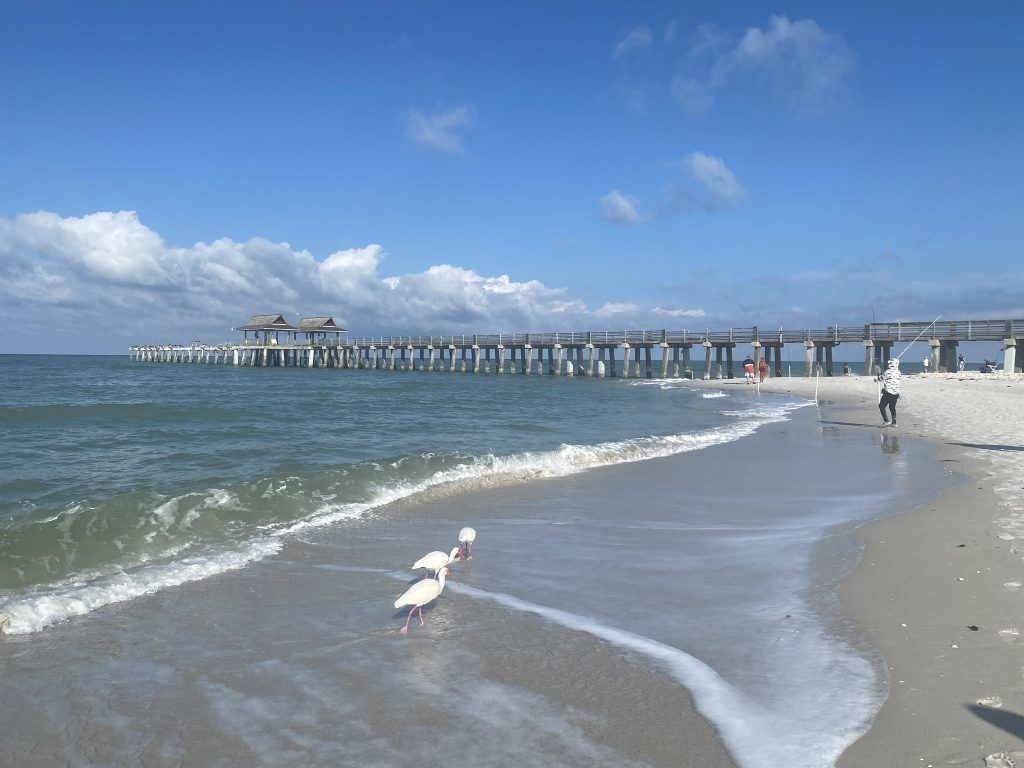
Optional Day 3-Day Itinerary: A Slower Pace
If two days doesn’t feel like enough to properly experience the Everglades, you can divide your trip into three days for a more relaxed adventure.
- Day 1: Explore the Ten Thousand Islands, and in the afternoon, relax and enjoy nearby Naples with its Gulf Coast beaches.
- Day 2: Dedicate an entire day to Big Cypress National Preserve and the Shark Valley Tram Tour, pacing the activities with time further exploration the area including both Nathan P Reed and Oasis Visitor Centers, Big Cypress End Boardwalk, and the second road loop.
- Day 3: Spend your last day exploring the Ernest F. Coe to Flamingo Corridor, diving deeper into stops like Pa-hay-okee Overlook, Mahogany Hammock, and Nine Mile Pond Canoe Trail. You can finish your adventure at the Guy Bradley Visitor Center with stunning sunset views.
While we enjoyed covering the park in two days in early March, the time of year and number of visitors may impact how long it takes you to cover each section.
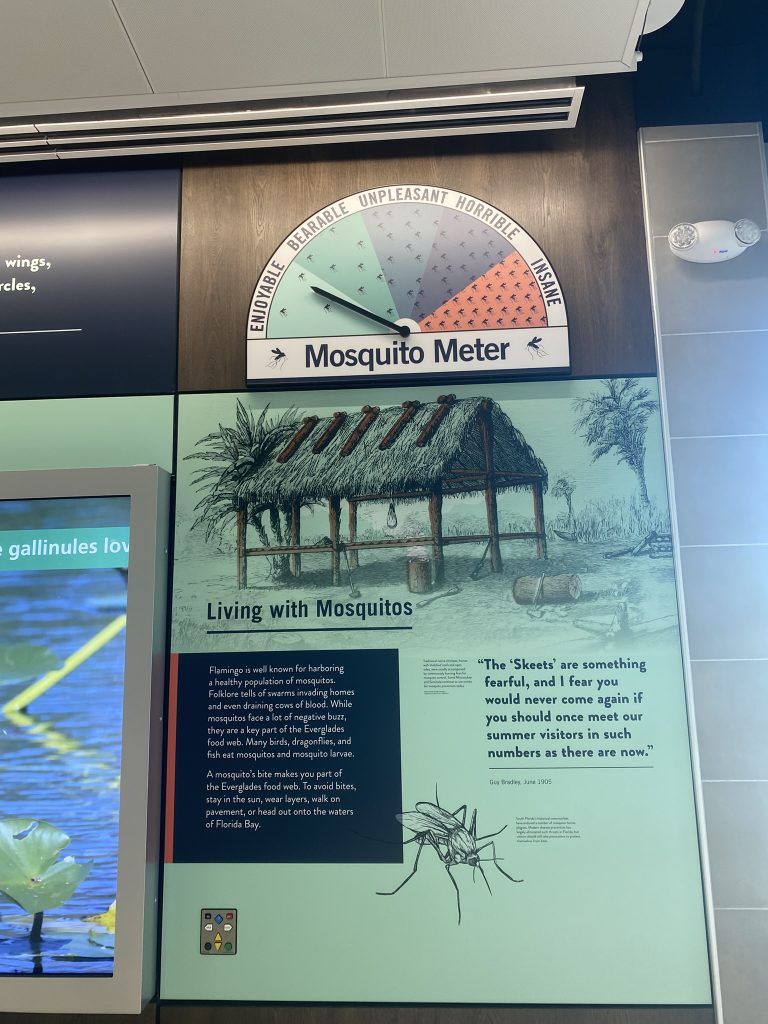
When to Visit Everglades National Park
The best time to visit is during November to April. The mosquitos and humidity aren’t as bad as a visit in the summer and you’ll avoid hurricane season in the fall. When we visited the first week of March, we found the weather to be pleasant and mosquitos at a minimum.
Everglades Family Adventures
There are plenty of family-friendly activities to enjoy in the Everglades National Park. Here’s how families can make the most of their visit:
- Boat Tours: Boat tours are offered daily and provide a fantastic way to experience the region’s fascinating ecosystem. Families can spot dolphins, manatees, birds, and more.
- Canoeing & Kayaking: Paddling tours are special way to explore the waters of the park and encounter its diverse wildlife.
- Airboat Tours: Families looking for a one-of-a-kind adventure can try an airboat tour offered daily by nearby businesses. These thrilling excursions allow visitors to zip through the sawgrass marshes and mangrove-lined channels while learning about the local fauna, including alligators and wading birds.
Accommodations in Everglades National Park
Everglades National Park offers a range of accommodations for visitors, from comfortable hotels to rustic camping sites. Here’s an overview of the park’s lodging options:
Park Hotels
- Flamingo Lodge: Located 38 miles south of the Homestead entrance, the Flamingo Lodge offers modern accommodations within Everglades National Park. 2-bedroom suites with water views will accommodate families of up to 6.
- Houseboats: For a unique and immersive experience, fully equipped houseboats are available to take out on the water. These floating accommodations sleep up to six, perfect for exploring the park’s waterways.
- Glamping: Visitors seeking a mix of outdoor adventure and luxury can choose from summer or winter glamping tents in Flamingo. This option will require multiple tents for big families.
Camping
Reservations can be made through the Flamingo Everglades website.
- Flamingo Campground: Located near the Flamingo Visitor Center, this campground offers 274 campsites with amenities such as flush toilets, showers, and potable water.
- Long Pine Key Campground: Situated in the northern part of the park, this campground has 108 campsites with amenities such as flush toilets, showers, and potable water.
- Stanton Creek Campground: This campground is located in the northwestern part of the park and offers 50 campsites with vault toilets and no showers.
- Backcountry Camping: For those who want a more rugged experience, the park offers several backcountry campsites that can be accessed by hiking or kayaking. These sites have no amenities and require a permit.
Nearby Hotels for Big Families
For accommodations that will fit your family. See our list of big-family friendly hotels in Naples and Homestead.
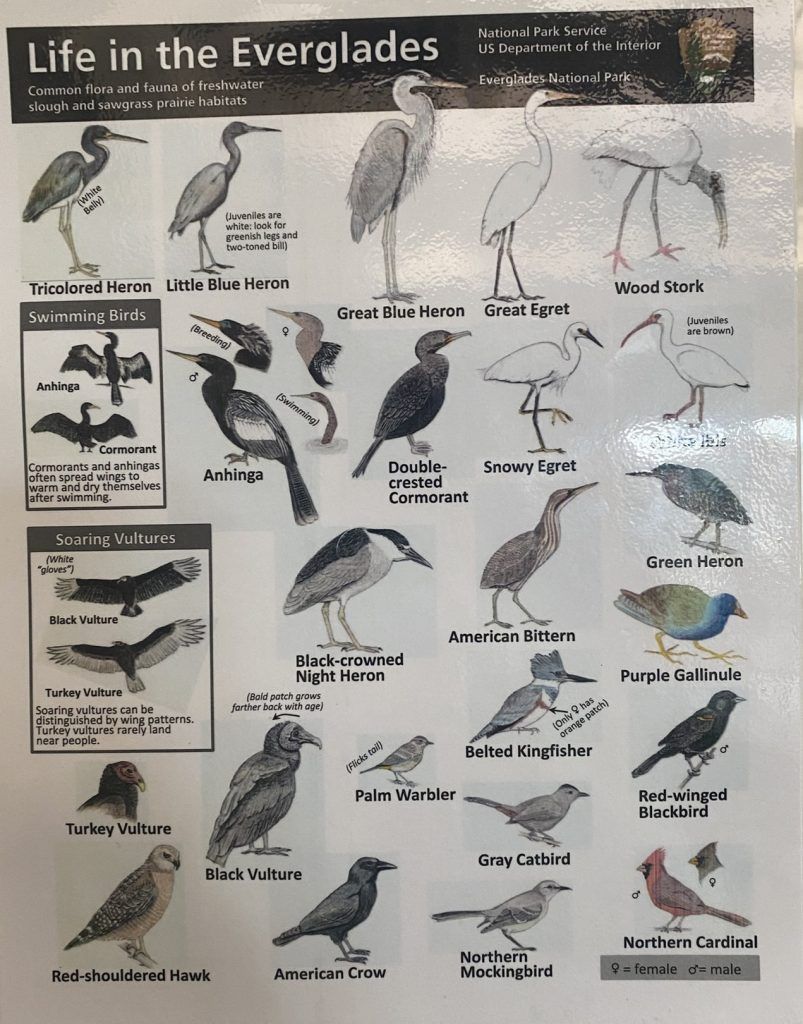
Tools To Plan Your Trip
Educational Resources
While exploring the Everglades with kids, take some time to point out the six unique habitats this park protects. Each one—from the freshwater marshes and mangroves to rare pine rocklands and tropical hardwood hammocks—introduces kids to the incredible variety of ecosystems that make the Everglades so special
Everglades National Park Books for Kids
- Find books for readers ages 3-6
- Find fun books for readers ages 6-8
- Explore further with books for readers ages 9-12
- Everglades National Park Guide Books
Everglades National Park Maps
Nearby Airports and Car Rental Options for Your Everglades Trip
On our trip, we flew to Fort Lauderdale-Hollywood using Southwest Airlines Travel Points, which made our trip even more affordable. If you’re looking to maximize your travel budget, consider signing up for a Southwest Rapid Rewards® Credit Card to earn points for future adventures.
Miami International Airport (MIA)
Miami International Airport, located about 50 miles northeast of the Everglades, is the largest and closest airport for most visitors. It offers a wide range of flights both domestically and internationally. With its central location, it is convenient for accessing various entrances to the park.
Fort Lauderdale-Hollywood International Airport (FLL)
Fort Lauderdale-Hollywood International Airport is approximately 70 miles from the park and an excellent alternative for visitors. It caters to domestic and international flights with generally fewer crowds than Miami.
Naples Airport (APF)
Naples Airport is geographically closer to Everglades National Park, especially for accessing the Ten Thousand Islands and Gulf Coast Visitor Center. While it is a smaller regional airport, it is only 30 miles from Everglades City.
Car Rental Options
All three nearby airports (MIA, FLL, and APF) feature top car rental companies. Due to the popularity of the area, we recommend checking in online to avoid long lines.
With its incredible diversity of ecosystems, abundant wildlife, and family-friendly activities, Everglades National Park is an unforgettable destination. Whether you’re exploring mangrove forests or biking through sawgrass marshes, your family is sure to enjoy this one of a kind park. Start planning your family’s Everglades journey today!
If you enjoy national parks as much as we do, check out all our national park guides.
Pin to Your Florida Travel Board
